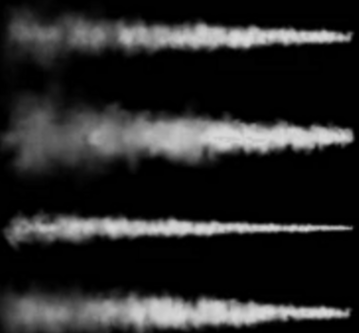Strömungsmessgeräte sind ein kritischer Bestandteil vieler industrieller Prozesse und die Genauigkeit ihrer Messungen hängt maßgeblich von der korrekten Positionierung ab. Dabei wird die Leistungsfähigkeit und Effizienz von Durchflussmessgeräten stark von zwei grundlegenden Strömungsformen beeinflusst: laminarer und turbulenter Strömung. Im nachfolgenden Beitrag erfahren Sie, was die laminare und turbulente Strömung charakterisiert, wie sie sich auf Messungen auswirken und wie Sie Probleme durch turbulente Strömung in Ihren Systemen minimieren können.
Laminare Strömung Definition: Idealzustand für Präzision
Die laminare Strömung lässt sich mit geordnetem Wasserfluss vergleichen, bei dem sich jede Flüssigkeitsschicht ungestört entlang ihrer eigenen Bahn bewegt. Hier gibt es keine Quervermischung der Schichten und die Geschwindigkeit der Partikel bleibt konstant, was zu einem stabilen Strömungsprofil führt. Dieses Phänomen resultiert in einer optimalen Bedingung für Durchflussmessgeräte, da es genaue und wiederholbare Messergebnisse ermöglicht. Die laminare Strömung von Wasser sorgt für ein stabiles Strömungsprofil und ermöglicht dadurch präzise sowie wiederholbare Messergebnisse in der Durchflussmessung. Vor allem bei niedrigen Fluidgeschwindigkeiten oder in Anlagen, in denen der Fluss durch wenige Hindernisse wie Ventile oder Kupplungen gestört wird, findet man laminare Strömungen vor.
Turbulente Strömung Definition: Herausforderung für Messtechnik
A turbulent flow, on the other hand, is characterized by irregular vortices and discontinuities that make the flow of a medium chaotic. It occurs when the orderly flow is disturbed by high flow velocities and interaction with installations such as obstructions caused by valves, adapters or couplings. Flow meters that are influenced by this type of flow can provide imprecise measurements, which can become a significant problem in control technology.
Laminare und turbulente Strömung: der Unterschied
- Hohe Genauigkeit: Laminare Strömung bedeutet weniger Störungen und somit zuverlässigere Messungen, was für Präzision in kritischen Anwendungen unabdingbar ist.
- Minimale Druckabfälle: Die gleichmäßigen Strömungen verursachen weniger Widerstand und Energieverlust, wodurch der Druckabfall über einem Durchflussmesser und damit der Energieverbrauch reduziert wird.
- Ideal für niedrige Durchflussraten: Insbesondere in Szenarien, in denen geringe Durchflussraten gemessen werden, ist laminare Strömung vorteilhaft, da Turbulenzen hier großes Potenzial für Messfehler bergen.
Laminare und turbulente Strömung bestimmen mit der Reynolds-Zahl
Die Reynolds-Zahl hilft Ihnen zu bestimmen, ob es sich um eine laminare oder turbulente Strömung handelt. Sie ist dimensionslos und universell anwendbar, unabhängig vom verwendeten Einheitensystem. Die Reynolds-Zahl unterstützt bei der Beurteilung und Vorhersage von Strömungsverhalten in unterschiedlichen Bedingungen, wie beispielsweise der Wasser- und Luftdynamik. Sie wird bestimmt durch die folgenden vier Variablen:
- Density of the fluid
- Velocity of the fluid
- Diameter of the pipe
- Dynamic viscosity of the fluid
The Reynolds number can be determined using the following formula: Reynolds number (Re) = (density x velocity x pipe diameter) / dynamic viscosity
A low Reynolds number (≤ approx. 2300) indicates laminar flow, while a high number (≥ approx. 3000) indicates turbulent flow. In the transition area between these values, the flow can exhibit characteristics of both laminar and turbulent flow.
The critical Reynolds number in this context indicates the exact threshold value of the Reynolds number at which a flow state changes from laminar to turbulent (typically around 2300 for liquids).
Wie Sie die optimale Einbausituation von Durchflussmessgeräten und Volumenstrommessgeräten in der Praxis am einfachsten bestimmen können, erfahren Sie in unserem Ratgeber. Die präzise Platzierung von Strömungswächtern ist entscheidend für exakte Messergebnisse, da sowohl laminare als auch turbulente Strömungen die Messgenauigkeit beeinflussen. Wichtige Aspekte zur optimalen Montage von Strömungswächtern und zur Minimierung störender Einflüsse werden dort ausführlich behandelt.
Tips for minimizing the effects of turbulent flow
It is critical to protect flow measurements from the disruptive effects of turbulent flow to ensure the integrity and accuracy of your measurements. Here are some tips on how to adapt your systems:
- Optimieren der Einbausituation
Um Turbulenzen zu minimieren, sollten unnötige Hindernisse im Strömungsweg vermieden werden. Sollten diese Komponenten notwendig sein, kann ein Turbulenzfilter bzw. Gleichrichter die Strömung beruhigen und zu einer laminaren Strömung zurückführen.
- Adhere to the recommended inlet and outlet distances
Optimal inlet and outlet distances are specified for each flow meter in order to calm the flow before measurement. It is recommended to maintain a sufficient distance from the measuring point, particularly behind fans and pipe bends, to ensure that the measurement result is as uniform as possible.
- Begrenzen der Strömungsgeschwindigkeit
Beachten Sie die empfohlene Rohrlänge, um die Geschwindigkeit an den Eingängen und Ausgängen der Durchflussmessinstrumente zu moderieren und somit von einer turbulenten zu einer laminaren Strömung zu wechseln.
- Implementierung von Turbulenzfiltern
Diese speziell entwickelten Filter helfen dabei, das Strömungsmuster vor einem Sensor zu glätten und somit die Genauigkeit der Messungen zu verbessern.
Anwendungsspezifische Aspekte bei laminarer und turbulenter Strömung
Beachten Sie, dass abhängig von Ihrem spezifischen Prozess und der Anwendung turbulente Strömungen unterschiedliche Auswirkungen haben können. In Bereichen wie der Halbleiterherstellung müssen sie oftmals strikt vermieden werden, um die Prozessstabilität zu gewährleisten. Bei anderen Prozessen, etwa bei hohem Druck, können die Effekte wiederum weniger bedeutsam sein.
Es ist essenziell, das richtige Durchflussmessgerät für Ihre Anwendung auszuwählen und zu berücksichtigen, wie laminare und turbulente Strömungen die Leistung beeinflussen können. Unsere Experten stehen Ihnen für tiefergehende Beratungen jederzeit gern zur Verfügung.
Neu in unserer Broschüre: „6 Fehler bei der Strömungsmessung und wie man sie vermeidet”
Discover the most common pitfalls in flow measurement that even experienced professionals can fall into. In our latest brochure, we highlight critical errors that affect the accuracy of your measurement data and provide tried and tested solutions to avoid them. Whether you are involved in the installation, maintenance or operation of flow sensors, this guide will equip you for reliable flow measurement. Increase the efficiency of your applications by learning about common mistakes and how to avoid them.
Innovative solutions from SEIKOM Electronic
SEIKOM Electronic bietet mit dem Volumenstrommessgerät RLSW®9 eine zuverlässige Lösung für die präzise Strömungsmessung von Gasen auch bei hohen Temperaturen. Der RLSW®9 ist flexibel einsetzbar und eignet sich optimal für verschiedene industrielle Anwendungen. So ermöglicht er Messungen bei Medientemperaturen bis 350 °C und bietet dank seines linearen Analog-Ausgangs sowie Schalters eine Regelqualität für präzise Steuerungsprozesse.






